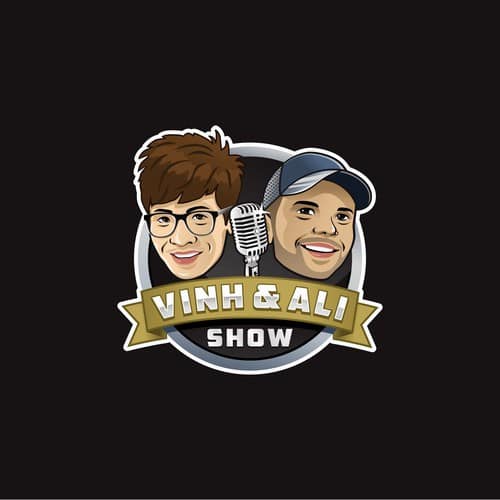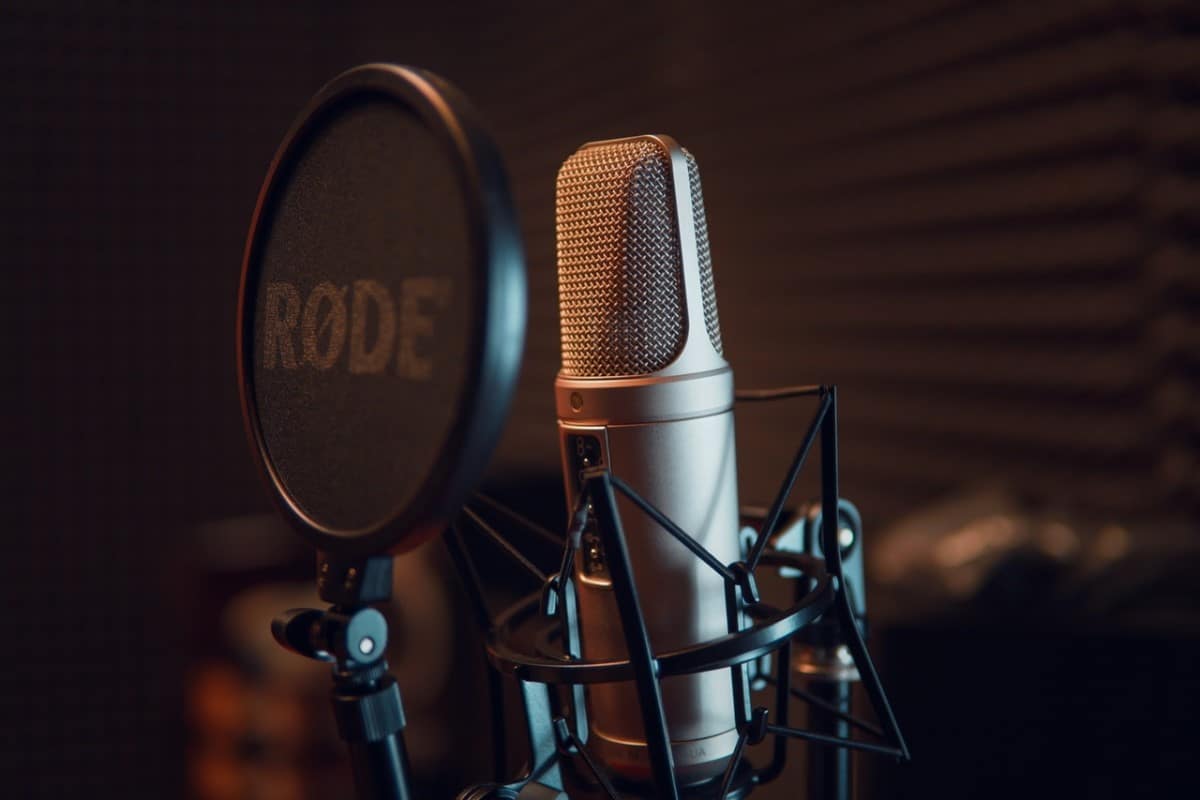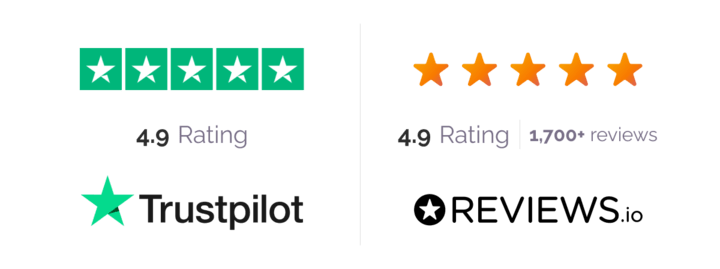If you’re looking for a simple step-by-step guide on how to brand a podcast, you’ve come to the right place.
We won’t lie, establishing a brand for your podcast takes some work, and there are some essential steps to ensure your podcast brand is visible, distinct and recognizable in the market.
There are lots of benefits of building a brand for your podcast. For instance, having a strong brand will help you to establish yourself as an authority within a particular niche, distinguish your show from any competitors, and ensure your podcast is front of mind when your audience is browsing their podcast feeds.
Whatever your reasons or needs for building a podcast brand, we’ll guide you through each step of the way: from how to create a podcast logo to develop your visual identity to how to foster a community for your podcast across channels.

Creating a Visual Brand Identity for Your Podcast
The visual identity of your podcast is something you should aim to get right from the start.
To keep things simple we suggest you focus on these five pillars of visual brand identity:
Logo: Simply put, your podcast logo is the face of a brand. Beyond communicating a clear message about what type of podcast you are and what you stand for, it helps create a first impression and grab your audience’s attention.
Remember to keep it distinctive and iconic, rather than being overly cluttered or complex, such as using a specific shape or a simple typeform. You can also opt for choosing a small icon, monogram, or any other symbol that is consistent with and aligned to your brand.


Colors: The color of a logo can reveal a lot about a company and a hue can be strongly intertwined with a brand persona. Each color has a variety of meanings and interpretations, for example, blue is often associated with professional and logical brands, whereas red is considered loud, playful and youthful.
Colors are one of the most important components in the logo design process due to the obvious impact they have on the audience.
Typography: After you’ve chosen a logo, consider the corporate font you’ll use on your website and across your various marketing channels and touchpoints. Choose a font that is both attention-grabbing and easy to read, but remains consistent with your overall aesthetic.
Audio Elements: Unlike other brands that are typically identified through visual mediums, podcasts are all about the audio. Therefore, your podcast brand needs an audio toolkit, from a soundtrack or opening theme to sound effects and the presenter’s voice, to create an impression on the audience. Think Terry Gross’ soothing tones on Fresh Air or the theme tune for Serial, which will always be instantly recognizable.


Imagery and photography: Ensure that the images that you use in any promotional material or branding are representative of your brand, personality and color palette. For instance, you could focus on the use of illustration and graphics, or your images could be black and white reflections of behind the scenes with your podcast presenters.
How to Create a Podcast Logo
Creating a podcast logo is essential since it’s usually the first impression a potential listener has of your podcast and brand. Everything your podcast logo transmits – or doesn’t – may make the difference between them tuning in or continuing to search for alternative options.
If you’re not a design professional, you’re probably questioning how to create the perfect logo for your podcast. Fear not! Customizing your podcast logo using professionally designed logo templates is the fastest and most reliable way to create a logo that stands out.
In a nutshell, your podcast logo should ideally reveal the theme of your podcast: make it plain and obvious what your podcast is about, whether it’s sports, politics, or even a skit show.
Establishing Your Voice & Tone
In addition to the visual aesthetics, it’s important to get your tone of voice right. To do this, we recommend you take some time to reflect on the vision, mission, values and target audience:
- Your vision refers to the general idea that guides you in the creation of your episodes over the long term. Without a clear podcast vision, there may not be enough connection between the various threads you weave from show to show.
- Your mission is the reason why you created your podcast in the first place. What are you trying to do, who are you trying to reach and what are you trying to say?
- And finally, what values do you have as a show and how will you transmit them through your content?
Once you have an idea of what you’re trying to do and why – and who you’re trying to communicate to – you can start to explore how.
What makes your tone of voice distinctive from other brands out there in the podcast market? How does it compare to other podcasts in your niche? Will you be funny or serious, sophisticated or silly, sincere or sarcastic?
The choice is yours, but remember to put your audience first to prevent alienating your potential follower base.

Promoting Your Podcast Across Channels
Twitter, Facebook, LinkedIn, TikTok, Instagram and YouTube are all effective channels you can use to promote your podcast, it’s time to create an ecosystem of great content for your audience. In addition to posting your show links on your social feeds, you can also develop content that provides new and existing listeners with multiple entrance points into each episode.
To get you started, here are a few content ideas:
- Share highlights: Use an audiogram tool like Headliner or Audiogram to share short, memorable, and engaging segments from your episodes across your marketing channels.
- Have your guests help: Promote upcoming episodes by tagging or mentioning your guests on social media—they might share or comment on the post, bringing your show to the attention of their audiences too.
- Engage with other creators: By interacting with other creators, you increase the chances that your show and brand will be viewed by their followers. Start by mentioning other shows you enjoy, as well as podcasters with whom you might collaborate.
- Share your major achievements: This allows others to celebrate with you as your show grows. This could include milestones such as reaching a specific episode number, finding a sponsor, or when your podcast is added an editorially curated playlist. You should create social media videos or posts to share and promote these milestones.
How to Maintain your Podcast Brand Consistency
Last, but by no means least, your brand voice, as well as your visual identity elements like name, logo, and podcast cover art, should be used consistently across all channels. To do this and ensure that you have all the assets you need when you need them, follow these quick tips:
- Plan ahead of time: Make sure you have your script ready. Even if it’s only a rough outline, you should write down what you’re going to say. During your podcast, you can be as spontaneous as you like, but having a written plan will help you stay on track. Writing it down on a list can also help you stick to your time limit, preventing you from rambling on long after your audience has lost interest. Writing down notes directly after you record will also help you keep track of what you might want to edit or use later as promotional material. For example, a great quote from a guest, or some funny bloopers.
- Keep a consistent schedule: The key to keeping your audience engaged is a regular publication cadence. Subscribers to your podcast will expect you to upload new episodes at the same time each week, and you don’t want to let them down or you’ll lose them. Most podcasters post weekly, but if you find a weekly cast too much, you might choose to post monthly or even on a fortnightly basis. The most important thing is to create and stick to a schedule.
- Set brand guidelines: Your podcast’s primary goal is to promote your brand, therefore you want listeners to remember it. Brand guidelines will help to keep you – and whoever you’re producing your podcast with – on track. It will also ensure that if you ever work with sponsors or advertisers, they’ll have a clear idea of your brand identity.
Wrapping it Up
While traditional branding principles such as defining a logo, name, and design are important, a podcast brand can enhance its branding by including audio cues too whether it’s a show theme, sound effects or even the presenter’s voice. This is why podcast brands must maintain brand consistency across all platforms and embrace the brand’s statement and vision, as with other branding efforts.
Keep in mind that to become a successful podcaster, you don’t have to be an established content creator or have a website. A podcast is a great method for creating an audience and establishing yourself as an authority in your field. So, use these tips to effectively promote your personal or brand podcast, and always remember to have fun while doing it.
About the Author

Lily López is a Content Writer and Marketer at Envato by day, and a Spatial Design student by night. She’s based in Tijuana, Mexico and has worked with several global clients for the past 7 years developing projects involving Content Operations, Data Analytics, Copywriting, Outreach and Voice-over productions. When not working, Lily can be found hanging out at the nearest flea market.



